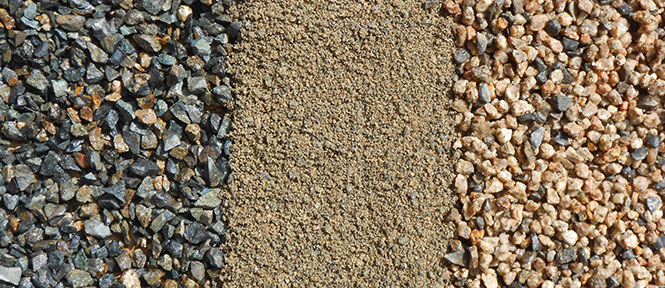Pipe Bedding Material
Pipe Bedding Materials, as their name implies, are usually used in trenches, underlaying precast concrete, plastic, or other types of pipe. Pipe bedding materials must be capable of supporting loads without deflection or settling, but also must be free-draining to prevent water build-up near the pipe zone. For this reason, pipe bedding materials are usually a mix of crushed or natural gravels and a washed sand product.
Although some variation in aggregate properties is expected, a few of the characteristics that should be considered when selecting Pipe Bedding Materials include:
- size and grading
- toughness and hardness
- cleanliness
Size and Grading
The maximum size of an aggregate designates the smallest sieve size through which 100 percent of the material will pass. Grading of an aggregate is determined by sieve analysis. Maximum size and grading are controlled by specifications that prescribe the distribution of particle sizes to be used for a particular aggregate material. The distribution of the particle sizes help determine the stability and density of the mixture.
Toughness (Hardness)
Aggregates are subjected to additional crushing and abrasive wear during manufacture, placing, and compaction. They must exhibit an ability to resist crushing, degradation, and disintegration. This resistance allows the pipe zone to eliminate deflection, which could be harmful to the pipe. The Los Angeles Abrasion test measures wear abrasion resistance of aggregates.
Cleanliness
Some aggregates contain foreign or deleterious substances that make them undesirable for concrete mixtures. (Example: clay lumps, shale, organic material, etc.) The sand-equivalent test, is a method of determining the relative proportion of detrimental fine dust or clay-like materials in the portion of aggregate passing the No. 4 (4.75 mm) sieve.
Pipe Bedding products are often mixed on a case-by-case basis, but are monitored through our continuous quality control program when in production and prior to shipment. This testing is performed by our in-house testing facilities, independent laboratories, and finally by Governmental Agencies such as CalTrans. If you need any test data, please contact the location you are interested in.



